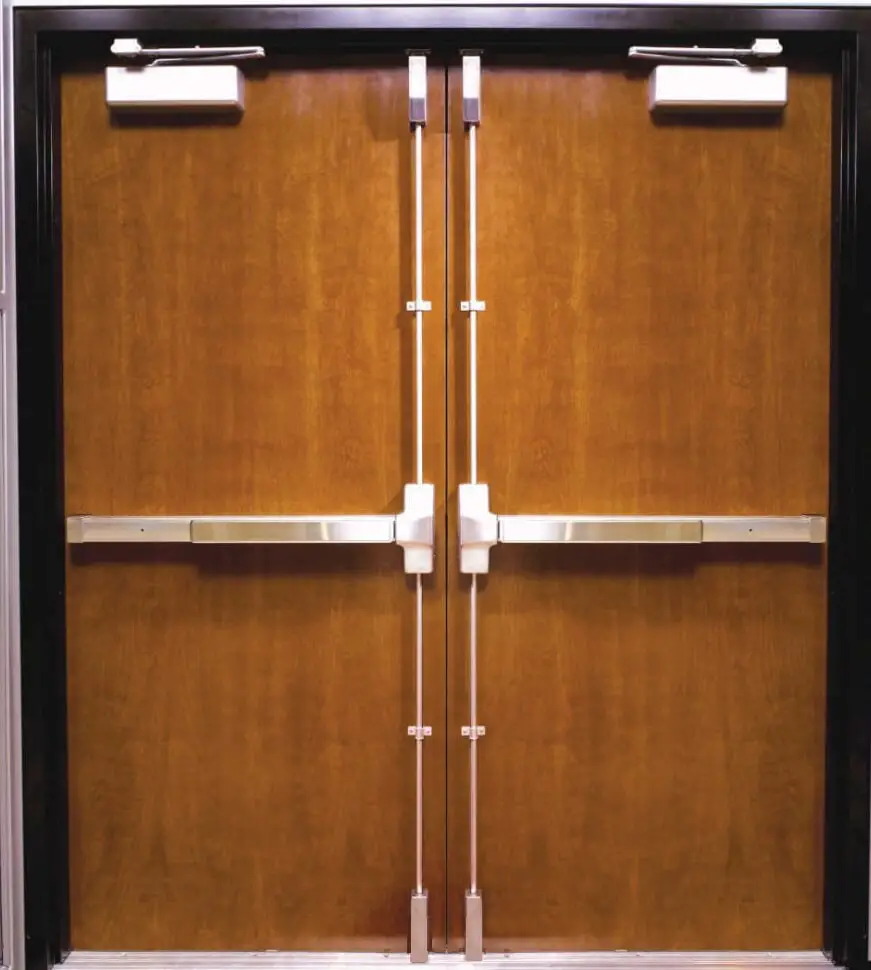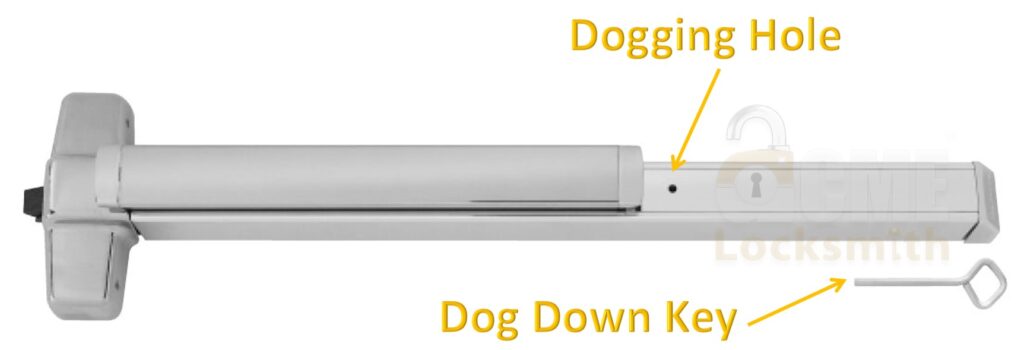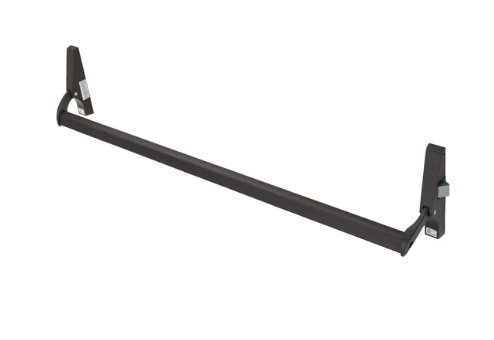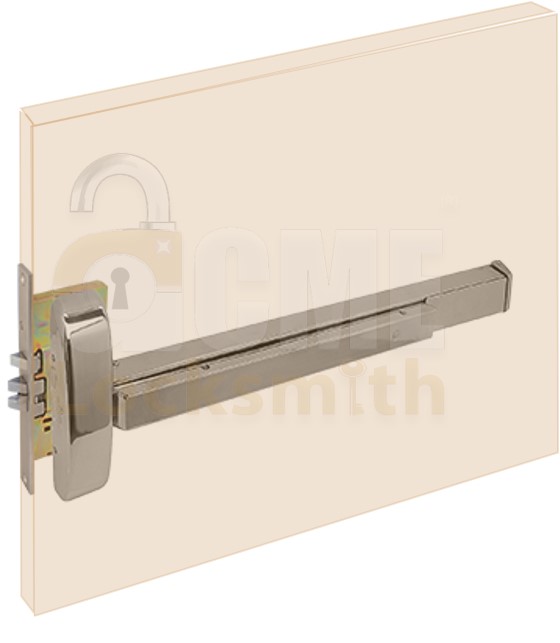Last Updated on June 4, 2024

What’s in a name? When it comes to exit devices, there is a lot of confusion.
There is no difference between a panic bar, crash bar, and push bar. The terms can be used interchangeably. You can also use “exit bar.” Panic bar, crash bar, exit bar, and push bar all describe the same door hardware that allows for emergency egress (exit from a building, through a door, in one motion).
The proper name for all of this hardware is ‘exit device.’
Exit device can further be sub-classed as ‘Panic Hardware’ or ‘Fire Exit Hardware’.
What is Panic Hardware?

Panic Hardware has the ability to be ‘dogged down’. This is a term that means the device can be set to not latch the door when the door is closed (i.e. the door will swing freely).
Panic bar hardware can be kept in the unlocked position by pushing down the panic bar, inserting a special “dog down key” into the “dogging hole” in the bar, and turning it to keep the panic bar in this pushed-in position.
This helps prevent wear and tear on the exit device hardware of frequently used doors.
Different Types of Exit Devices

There are, however, some differences in the design of exit devices.
The three main designs for exit devices: Touch Bar Devices, Cross Bar Devices, and Integrated Device.
- A Touch Bar Exit Device has a push pad mounted along the door for at least half the width of the door. Pressing it will unlatch the door so that it will open.
- A Cross Bar Exit Device has a bar that sticks out from the latch. It is pressed down to activate the latch.
- An Integrated Exit Device is like a Touch Bar, except it mounts inside the door as to not project out.
Different Exit Device Design Types

Lastly, we can clarify exit devices by how they latch to the frame of the door.
- A Rim Exit Device is a surface mount push bar. It has a latch that hits a strike that is mounted on the inside surface of the door frame.
- A Mortise Exit Device has a lock body that sits inside of a pocket within door and latches to the strike in the door frame. The crash bar is surface mounted to the mortise lock body.
- A Surface Vertical Rod Exist Device is an extension of a Rim Device. In addition to the latch it has one or two vertical rods that will latch the door at the top and bottom of the door. When the device is activated, these additional latches retract as well.
- A Concealed Rod Exit Device does the same thing as the surface vertical rod device, but the rods run within the door so that this exit device is usually used with a Mortise Device (also inside the door.)
